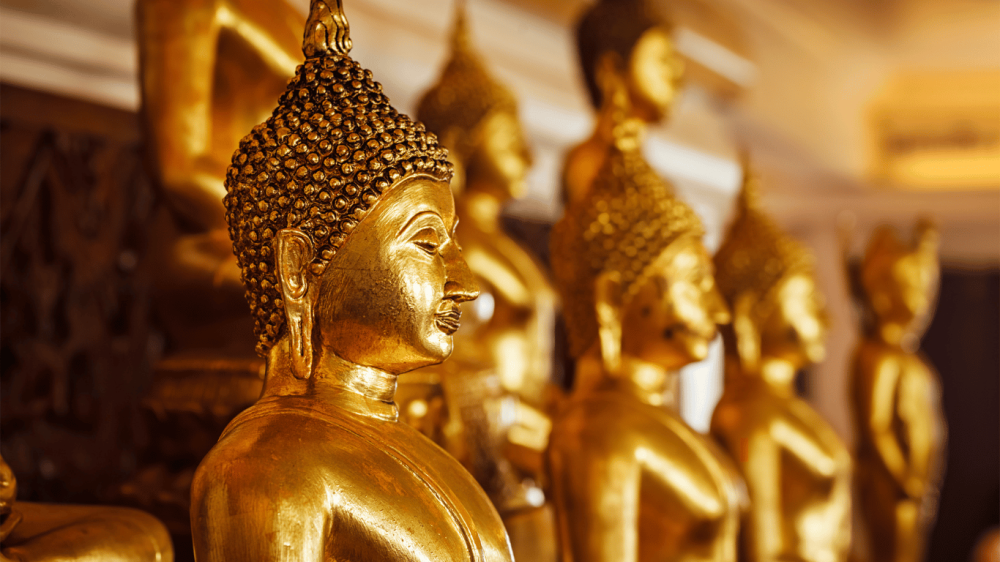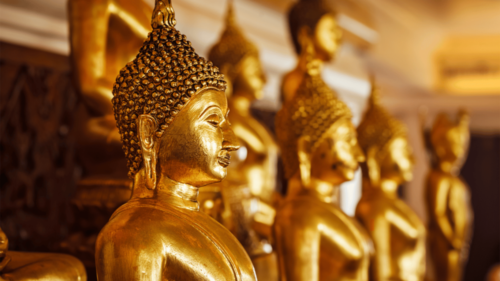
Anxiety can sneak up on you.
Sometimes, it’s a quiet whisper in the back of your mind; other times, it’s akin to a pounding drum, demanding your full attention.
Symptoms like a racing heart, unsettling thoughts, and an overwhelming sense of dread can become all too familiar to someone grappling with anxiety.
But amidst the chaos, a gentle and effective approach awaits: meditation.
I consider meditation a close friend, a refuge in the storm of unease.
It doesn’t ask much of you, just an open mind and a few moments of your time.
As a complementary therapy, meditation isn’t meant to replace medical advice or treatments prescribed by healthcare professionals.
Instead, it offers a supplementary path towards managing the symptoms of anxiety, enriching the journey toward tranquillity.
Various meditation techniques can cater to different preferences and needs:
- Mindfulness meditation encourages present-moment awareness
- Transcendental Meditation uses mantras to dive into deep rest
- Guided Visualizations paint calming mental imagery
Each form holds the potential to alleviate the grip of anxiety, giving the mind a moment of reprieve.

The Science Behind Meditation and Anxiety Reduction
Multiple studies highlight the effectiveness of meditation in reducing anxiety.
A common thread in these studies is the discovery that regular meditation can decrease the production of stress hormones, such as cortisol.
During meditation, you enter a state of deep relaxation, which directly impacts your physiological stress responses.
This state affects your immediate feelings of calm and can have lasting effects on your overall stress levels.
Neurologically speaking, meditation exercises the brain in a way that teaches it to regulate emotions.
Functional MRI scans have shown that meditation strengthens the connection between the amygdala, the brain’s threat detector, and the prefrontal cortex responsible for reasoning and decision-making.
This improved connection enhances an individual’s ability to manage anxiety.
Changes in brain wave patterns are another significant benefit of meditation.
Through techniques like mindfulness and focused attention meditation, individuals can increase the prevalence of alpha waves, which are associated with a relaxed state of mind.
Over time, this can result in a more peaceful and less reactive mental state.
The science is clear:
meditation can reshape the way our brains work, making us more resilient to stress and improving our ability to cope with anxiety
It’s not just a temporary fix; it’s a tool for building and maintaining mental fortitude over the long haul.
Practical Meditation Techniques for Anxiety Management

If you’re interested in using meditation to help manage anxiety, starting with simple techniques can make the process approachable.
I’ll share a few methods that are easy to learn and can effectively reduce anxiety.
Mindfulness meditation
is a good starting point. It involves paying attention to the present moment without judgment.
- To begin, find a comfortable seat and set a five-minute timer.
- Focus on your breath, the rise and fall of your chest, or the feeling of air entering and leaving your nostrils.
- When your mind wanders, as it will, gently bring your attention back to your breath
Breathing Exercises
are another key tool in your meditation kit.
A technique known as ‘diaphragmatic breathing,’ or ‘belly breathing,’ can be particularly helpful.
Here’s how you do it:
- Lie down or sit comfortably
- Place one hand on your belly and the other on your chest
- Breathe in deeply through your nose, ensuring your diaphragm inflates enough to create a stretch in your lungs.
- Then exhale slowly through your mouth.
Repeat this for several minutes.
Visualization
is a powerful method to invoke a sense of serenity.
- Close your eyes and picture a place where you feel calm and safe.
- Imagine the sights, sounds, and scents of this place.
- Engage all your senses to make the experience vivid.
- Spending a few minutes in your imagined haven can significantly quell feelings of anxiety.
These techniques don’t require much time, and they’re incredibly flexible.
You can practice them alone, during a break at work, or even while waiting for an appointment.
The key to their effectiveness is consistency, which I’ll discuss in the next section about weaving meditation into your daily life.

Incorporating Meditation into Your Daily Routine
Building a consistent meditation practice can be the key to experiencing its full benefits for anxiety relief.
But I know that starting a new habit, especially with a busy schedule, can be daunting.
The good news is, with the right approach, you can successfully integrate meditation into your life, regardless of how hectic it might seem.
Start by setting a realistic goal.
If you’re new to meditation, aim for a short session, maybe five minutes, once or twice a day.
On waking, spend a few minutes in bed meditating before starting your morning routine, or use the first few minutes of your lunch break to clear your mind.
The idea is to find times that work for you and build from there.
It’s essential not to get discouraged if you miss a session.
What’s more important is to keep at it.
Like any skill, consistency is key to proficiency, and this holds true for meditation.
Commit to a time that is most realistic for you and treat this appointment with yourself as non-negotiable.
Creating a dedicated space can also help.
Choose a spot in your home that is quiet and where you can sit comfortably without interruptions.
This doesn’t have to be a large space – even a corner of a room can become a serene spot for your practice.
By meditating in the same place regularly, you signal to your mind that it’s time to relax and de-stress whenever you enter this space.
Involving family or friends can offer additional support and help solidify the routine.
Share with them what you’re doing and your aspirations with meditation.
They can provide encouragement on days when your motivation wanes and can even become meditation partners, further anchoring the habit in your daily life.
Real-Life Success Stories: Overcoming Anxiety with Meditation

I spoke with individuals who’ve walked the path you’re on now, facing anxiety’s challenges.
Their stories resonate with perseverance and are a testament to meditation’s transformative power.
- I heard from Emily, who described her journey with anxiety as a ‘constant battle’.
But once she introduced meditation into her life, she noticed profound changes. She shared that the moments she spends in meditation have become ‘an anchor’ in her tumultuous day.
2. A psychologist I consulted, Dr. Soto, unboxed the long-term benefits of meditation seen in his patients.
‘Meditation isn’t just about dealing with the immediate symptoms,’ he told me, ‘It’s about retraining the brain to manage stress more effectively.’
The sense of community can be powerful for individuals dealing with anxiety.
This article is not the end but a starting point, and I encourage you to seek out groups, either online or in your local area, where experiences and meditation techniques can be shared.
Remember, the path isn’t one-size-fits-all.
What works for one person may not work for another, but the individual stories I’ve encountered provide hope that with patience and practice, inner calm is within your reach.
Stay committed to your meditation practice, and in time, you might just find that anxiety becomes a softer whisper rather than an overwhelming shout.


Want to receive my latest posts by email?
Keep ahead of the latest by signing up below.

